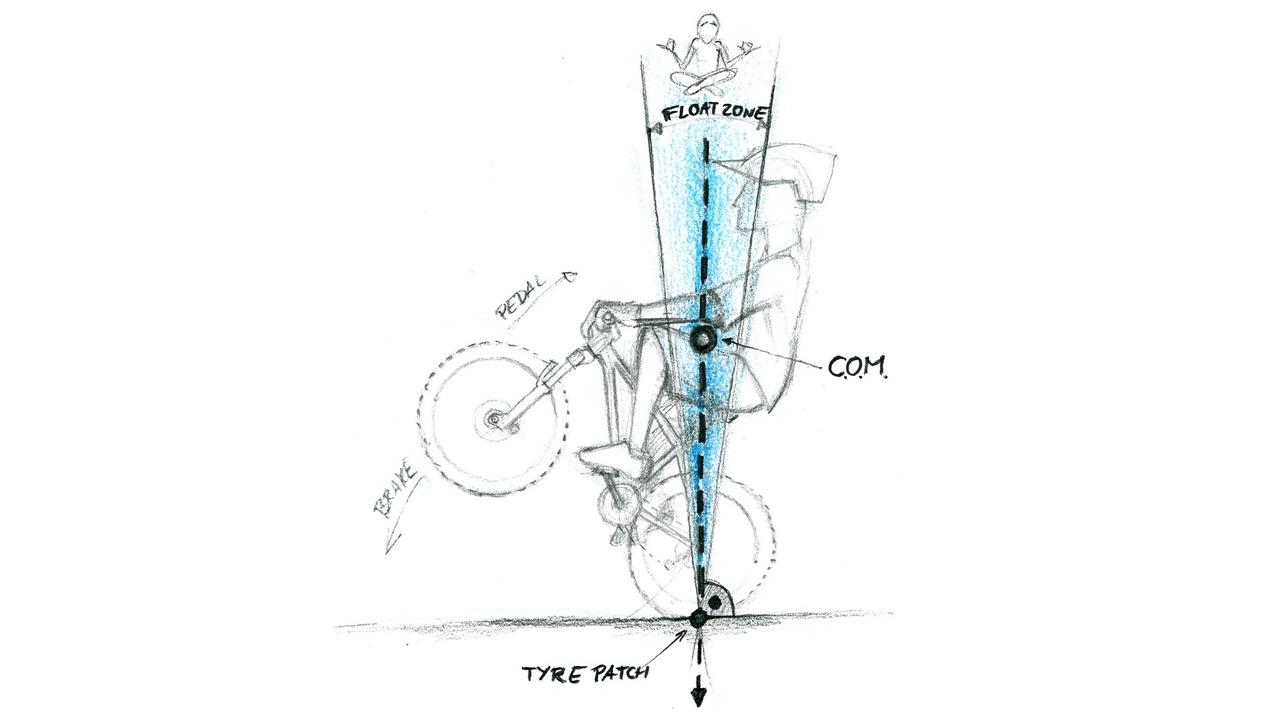Brake Modulation - a Touchy Subject!

Have you ever felt like your brakes are too powerful?
Or that your brakes don’t have modulation?
If so, then this article will explain why.
I’m going to use wheelies as context, but the theory can be applied in other circumstances too.
First off, brake modulation is when you're dragging your brakes, somewhere on the continuum between off and on.
In order to feel modulation for wheelies, your rear brake needs to be loaded, and this load is dependent on your Float Zone Weight Distribution.

For example, you WON'T be able to experience modulation when:
You’re in the front of the float zone or lower, or in other words a position where your front wheel wants to fall down forward when you’re not pedaling. If you add speed to this, then any hint of rear brake will throw the front wheel down without any chance to experience modulation. (Great for when you’re training your finger to rear brake habit).
Modulation during wheelies is challenging to learn, and many riders fail to secure this skill. Believe it or not, all those zero modulation front wheel slam downs I ask you do in The 30 Day Wheelie Challenge are part of the process - you need to trust your rear brake fully because modulation requires you to go into the Back Half of the Float Zone. This is where your rear brake becomes loaded.
Modulation is needed to maintain a wheelie when you tip too far rearward into the float zone, the rear brake modulation adjusts your center of gravity forward.
If you pedal too hard and end up in the back half of the float zone, your rear brake will need to stop not just the momentum of the bike but the momentum of your body. The further rearward you go, the more load, and the more brake modulation needed. If you don’t have enough speed when you end up too far rearward, then the rear brake action will just slow you right down to a stop. Still following me? If not, take a brake and go back a paragraph or two ;-)
It’s common to end up going a little too fast in a wheelie, especially if you’re pedaling with the front wheel just a little too low. So to control your speed, you’ll often need to pedal a little harder to pop yourself just into the back half of the float zone, which requires you to speed up just a little, and at that point you’ll be able to modulate your rear brake with control, slow down, and then continue pedalling in a beautiful wheelie once you pop back into the front half of the float zone.
I hope this helps provide some theory that you can take back to your dedicated wheelie practice.
Ride ON!
Stay connected with news and updates!
Join our mailing list to receive the latest news and updates from our team.
Don't worry, your information will not be shared.
We hate SPAM. We will never sell your information, for any reason.




